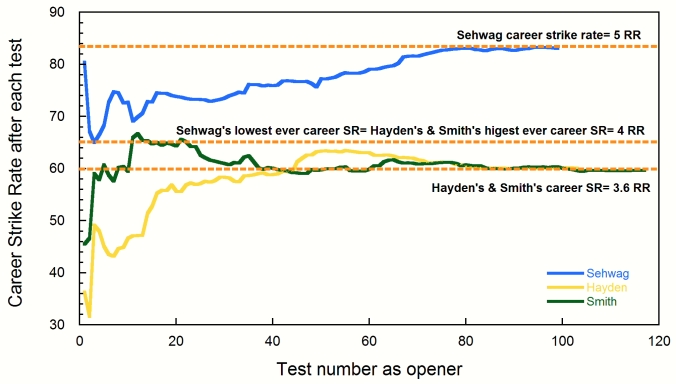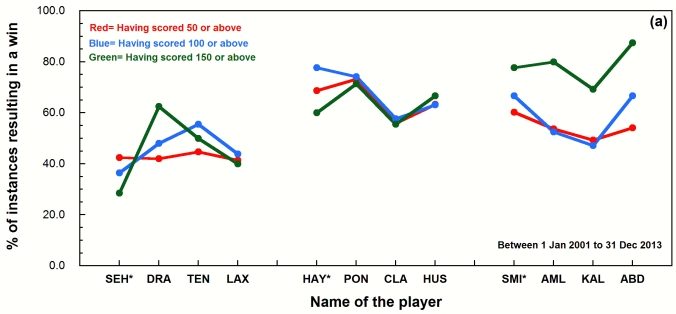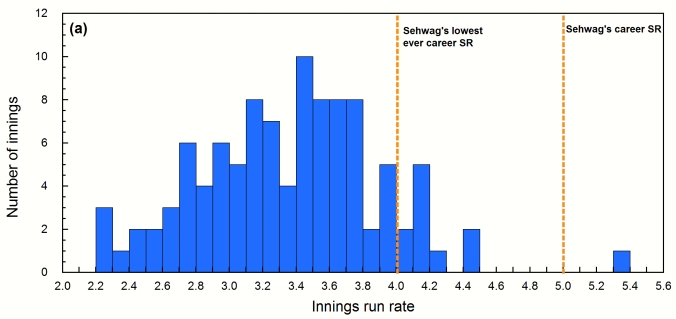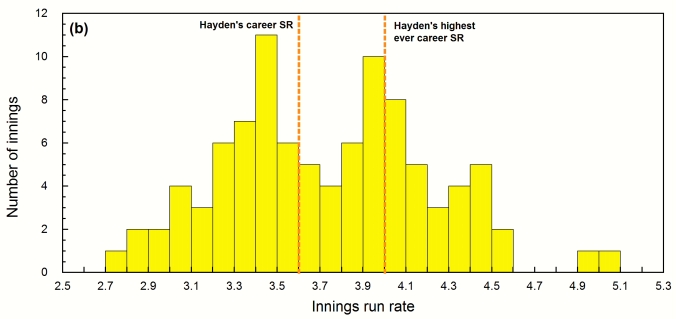
You’re dangerous Maverick: The movie that catapulted Tom Cruise’s action hero credentials to the public consciousness. Image source: 1
In 1986, the movie Top Gun ruled the box office, raking in more than 350 million dollars. The movie was centered on kinship with a fellow wingman, dangerous piloting skills, classic rivalry and a man who was yet to be synonymous with the mission impossible franchise. The movie made the thirst for speed and living dangerously sexy. The movie put bums on seats but did not win any of the major awards at the Academy. The movie was credited with the surge in sales of the Ray Ban Aviator model and a 500% increase in the number of men wanting to be Naval Aviators. I was far too young in 1986 to remember the iconic quote from the movie which typified “Maverick” but years later, when I caught it on Satellite television, it was already a rite of passage for high school boys in India eager to demonstrate a grasp of “other” cultures. Many a superstar has vied for the crown of the all action Hollywood star but even today, at 50+, few can match Tom Cruise in his sheer penchant for high octane action. The iconic quote inspired a racing game series, which in turn had a symbiotic relationship with the Fast and Furious franchise. The basic premise was built on the viewing thrill of a protagonist’s adrenaline being fuelled by the need for speed.

Sehwag is the only batsman alongside Bradman to have scored 250+ four times and 290+ three times in test cricket. Image source: 2
One could be mistaken for making the association of Sehwag’s career with the very same set of words. After all, the much loved Paul Walker from the Fast and the Furious franchise had a character timeline overlapping with Sehwag’s. Rajesh and Sidvee have deconstructed Sehwag’s legacy in the Indian team in their own very contrasting ways. Sehwag’s buccaneering style brought a smile to a country which wanted to define its own place in the world, poignantly captured- in a narrative of Gavaskar, Tendulkar and Sehwag intertwined together with India’s story- by an American in the midst of the 2011 World Cup. The numbers are there for everyone to see; Sehwag has 4 out of the top 6 highest scores made by an Indian in a test match. For a generation so used to seeing the 236* as the proverbial four minute mile from a bygone era, the floodgates opened from 2001 with 9 forays into unchartered waters with Sehwag as the most frequent navigator. This exemplified India’s golden age of batting more than anything else.
Sehwag’s record as an opener is exemplary- amongst the openers who have scored 5000 test runs, Sehwag is perched in the company of other illustrious batsmen such as Hutton, Hobbs, Hayden and Gavaskar as the only men to average above 50. As many statisticians have pointed out, Sehwag is in a league of his own in the strike rate as an opener measure, a lofty 83 with others in the whereabouts of 60 since 2001 (minimum 5000 runs). The numerical value of SR at 83 has its own significance- it means that Sehwag scored at a run rate of ~5 when the rest of the world scored at 3.24 (SR of 54). Adam Gilchrist, of the swashbuckling blade that followed 5 batsmen who scored at 45+ per dismissal, is the only peer who is in the neighbourhood of Sehwag in the last 20 years. This is an exemplary achievement considering that only 20 men have scored 5000 runs at a greater strike rate in the ODI format, with Richards, Jayasuriya and Tendulkar as the only players to make their debut before 1996.

A shot in time, saves nine: Sehwag, as a result of his quick batting, has saved more overs than any other test cricketer. Image source: 3
A knock- on effect of Sehwag’s blitzkrieg strike rate is his balls faced per dismissal. Sehwag has one of the lowest balls faced per dismissal (60) as a consequence of his high strike rate (discounting lower order batsmen of course). To put this into perspective, other top notch batsmen (average ~50 for whom ball by ball data is available), clock in at least 100 balls per dismissal as they score at a serene 50 SR. In other words, for scoring the same 50 runs, Sehwag saves ~6.4 overs per dismissal at a bare minimum. If we stretch this to further to Kallis/ Dravid territory (123+ balls per dismissal), Sehwag gave his teammates an extra 10.3 overs by the time he scored his 50 runs and got dismissed. The impact of the extra overs to bowl out the opposition cannot be discounted. Hayden and Smith were part of sides which had their bowling attack dismiss a batsman every 60 balls. This implies that when Australia & South Africa were winning test matches, they were conceding 600 runs and in turn dismissing the opposition in 200 overs (a little over 2 days). In contrast, India with a pedestrian bowling attack had to face the double whammy of conceding 35 runs per wicket and bowl an extra ~1.2 overs per dismissal. The corresponding figures that India would accrue are 700 runs after managing to dismiss the opposition twice, thus staying on the field for 25 overs extra. By virtue of India’s poor bowling attack, not only were India 100 runs behind overall, but were also on the field for almost a full session. This only implies that for every 50 that Sehwag scored, he gave India a better chance of victory. Since his appetite for big scores was legendary, he gave India an extra 20 overs (at the very least) on his own account to dismiss the opposition twice every time!

Progression of career strike rates of Sehwag, Hayden and Smith at the top of the order in the test format. Quite clearly, Sehwag has been the most destructive opener in the history of Test cricket.
Amongst Sehwag’s contemporaries, only Hayden and Smith are of comparable stature, deeds and statistics (SR ~60, Average> 49). But here too, Sehwag is in a one man club when his strike rate is considered. The extent of his dominance over his two other illustrious peers is illustrated in the fact that Sehwag’s lowest ever career strike rate is comparable to the highest ever career strike rates of Hayden and Smith. In the time period of 1 January 2001 to 31 December 2013 (the corresponding years that Sehwag played for India), Australia, South Africa and India were the teams with the best W/L ratio and batting averages. Coincidentally, the three openers played with some terrific batsmen down the order. The fact that each player has 3 other players below them in a stable batting order averaging over 49 has a nice touch of symmetry to it (over 3500 test runs). Here too, the Australian team was in a different zone with 4 other players in the 45 to 49 runs per dismissal band and if the bar is set lower at 1000 runs, the list is infested with ten Australians in all. Clearly, the Australians were able to find personnel to perform at a high level even after key personnel retired/ were dropped and this was a cornerstone to their success.

A plot of the percentage of (a) Wins from the total innings of 50+, 100+ and 150+ scored by top batsmen from Ind, Aus and RSA in Sehwag’s time. * Indicates that only figures as an opening batsmen have been considered.
Proceeding to examine the hypothesis of Sehwag’s whirlwind batting at the top of the order, one has to see the relative merits of scoring big and their concomitant effects on the result. Considering that a batsman has historically scored at ~37 runs per dismissal in the case of a win or a draw and ~21 in a defeat, a big score by a key batsman can have profound implications in the result of a match- mostly, a victory or a draw. Of course, the maxim of a side having to take 20 wickets to win a match rings loud and clear but the underlying effect of scoreboard pressure and setting up a match cannot be ignored. A key assumption made in this analysis is that with a greater score individual score being amassed, on an average, has a greater chance of a big team score being made and thus swinging the match in favour of the batsman’s team. Upon observing the historical trends of instances of a particular result occurring upon a batsman scoring over 50, over 100 and over 150 respectively, several patterns become clear. In spite of having similar batting giants dot the batting lineups of three winningest teams in the aforementioned period (1 Jan 2001 to 31 Dec 2013), the effect of a good bowling lineup is there for everyone to see. In general, scoring big is a guarantee to higher percentage of instances of victory and draws. However, for Indian batsmen, only Dravid is within sniffing distance of the level achieved by the Oz and Saffers; he has been on the winning side 60% of the time, that too after scoring a 150. Indian batsmen usually languish in the 40- 50% band, whereas, the batsmen from the other teams with better bowling attacks were able to force a favourable result for their respective teams.

A plot of the percentage of (b) Losses & (c) Draws from the total innings of 50+, 100+ and 150+ scored by top batsmen from Ind, Aus and RSA in Sehwag’s time. * Indicates that only figures as an opening batsmen have been considered.
A draw has been the most likely outcome when an Indian batsmen has scored big which is a damning indictment on the Indian team’s bowling inability to close out a match after piling on the runs. Universally, scoring big is the surest way to avoid defeat but this result should not come as a surprise given the very premise. Every batsman barring Hayden have featured in lesser defeats (% wise) after scoring a big hundred. A special mention should be made to the bullet proof batting lineup of the South Africans; every time Smith has scored a 100 or Amla/ Kallis/ de Villiers have scored a 150, their team has never lost! That this holds true from Kallis’ timeperiod to date is even more impressive.

A histogram of (a) India’s run rate versus Sehwag’s strike rate. India has outscored Sehwag’s career strike rate only once, that too with Sehwag’s 200.
And now to the end product of Sehwag’s heroics- the result. India have never been able to capitalize on Sehwag’s blazing starts. He’s the only batsman in this elite bunch whose likelihood of victory went down (correspondingly, the likelihood of a draw increased) with each addition of 50 to the individual score. His Win% drops from 42 to 27 when he zooms from 50 to 150 (in spite of him saving 6 overs per 50 additional runs scored, on an average). And given that he has scored pretty quickly, it only means that India have not put the extra overs that Sehwag has earned to good use. The Loss% has dropped no doubt but India have had a tendency to pile on the draws whenever Sehwag scored big. An explanation to this puzzling conundrum can be obtained upon perusal of the run rates that India have scored at. Sehwag has got a start (at least 20 runs) in 102 out 180 innings as an opener; only 2 of these innings have a SR of 50 (RR= 3) or lower and 12 are below SR of 67 (RR= 4). It is a result of these fantastic combustive ability that Sehwag’s lowest cumulative batting strike rate as an opener is an incredible 65, that too way back in 2002. Of all the matches that India have played with Sehwag in the side, only 11 of 103 matches have been above this run rate mark of 4. Keep the benchmark at Sehwag’s career run rate of 5 runs per over, only 1 match makes the cut. Unsurprisingly, Sehwag’s blitzkrieg 200 played a huge part in the run rate being 5 in the first place.

On the other hand, (b) Australia and (c) South Africa have scored at a faster rate compared to their respective opening batsmen, Hayden & Smith. The distribution of the histograms shows a greater number of innings clustered over the 3.8 RPO mark.
Simply put, India have never been able to press home the advantage once Sehwag got dismissed and at many times, batted apologetically at a lesser pace- as if to compensate for the carnage that had unfolded. On the other hand, Australia and South Africa scored at a comparable pace to the career strike rates of Hayden and Smith and in some cases, even higher than their highest cumulative career strike rate. Granted, Hayden and Smith did not bat at the same rate as Sehwag but even if we could hypothetically consider, rather sacrilegiously, that Sehwag were to be a part of these Australian and South African sides, they were more likely to follow his fireworks with some more of their own. The Indians, more often than not, were content in bringing out the sparklers once the big firecrackers blazed brightly against the festival sky.

Cruise and Sehwag: Two of a kind; both have accomplished pretty astonishing feats, best enjoyed on prime time TV. Caution: These stunts are performed by professionals. Please do not try this at home. Image sources: 4 & 5.
Sehwag’s detractors will be quick to point out that he made his big runs in Asia. While this may be true, not all of his knocks came on featherbeds. The sight of a spinner made him bring out the heavy artillery and he played with the mentality of a big game hunter. Others may point to majority of his big hundreds resulting in draws and imply that he scored easy runs and found the going tough on seaming pitches. And many others would simply blame his inability to bat for time, forgetting the very essence of Sehwag which changed the complexion of a match and made chasing 387 possible. This lingering sentiment encapsulates the hold that Sehwag has on us; like Tom Cruise, he’s never really been an actor who has won the plaudits for the depth & range of his craft. Yet, one can put his/ her money on him to make the most death defying stunts seemingly in range, even at an older age. To bring a smile to the face and some popcorn when he’s on the screen. Put bums on seats and bring some life to the turnstiles year after year. And get a warm, fuzzy feeling of nostalgia whenever “Take my breath away” or “Danger zone” or “Playing with the boys” is requested on the radio.
Disclaimer: Some images used are not property of this blog. The copyright, if any, rests with the respective owners.





